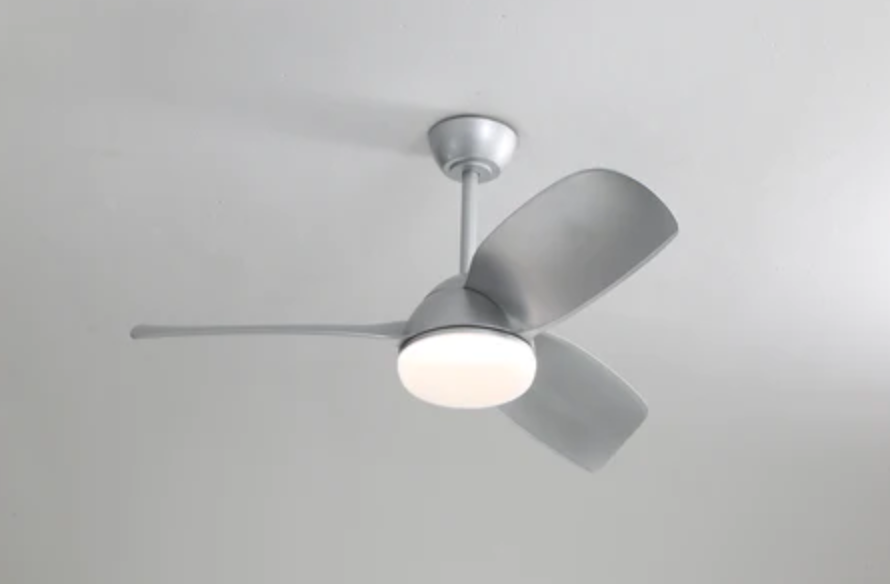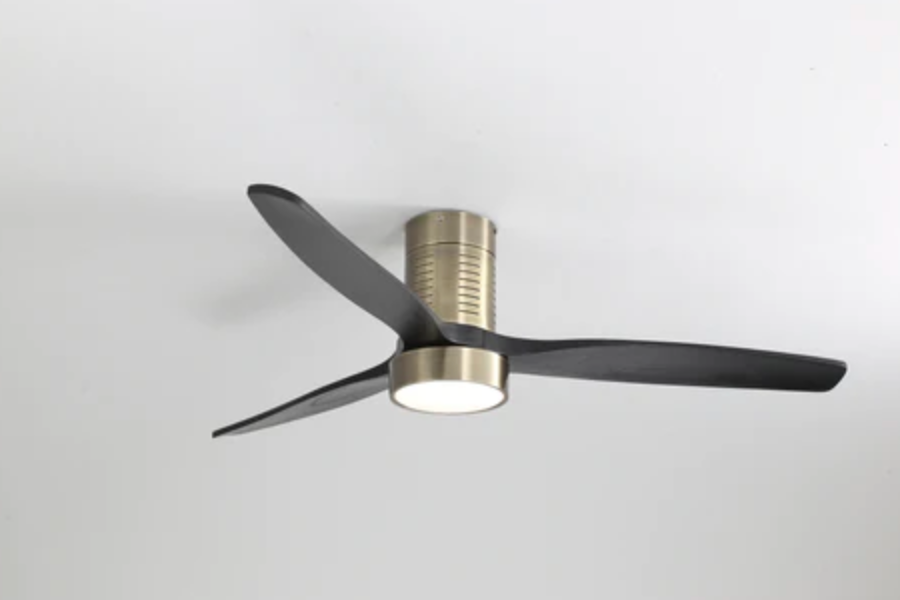
Why does my ceiling fan wobble?
There are several possible causes for a ceiling fan to wobble. If the fan has recently been installed, it may not be properly balanced, which can cause the blades to vibrate when operating. Loose mounting screws or brackets can also cause an unbalanced fan. Blades that have warped due to water damage can cause vibration and wobbling can also be caused by worn or unbalanced fan blades. If a single blade looks bent, warped, or out of alignment with the other blades, it should be replaced to restore balance. In some cases, the fan motor itself might need to be adjusted in order for the fan to run correctly. Finally, incorrect installation of an extension rod between your fan and the ceiling can produce wobbling. To correct this, try re-installing the extension rod to make sure it is securely connected. In all cases, if you are unsure of what has caused your fan to wobble, contact a qualified electrician for assistance. They should be able to diagnose and fix the problem quickly.
Once the problem has been identified and fixed, your fan should run smoothly and without any wobbling. If you have done a DIY installation of your small room ceiling fans, make sure that all parts are securely tightened and balanced before running it. This will ensure that you get optimal performance out of your fan for years to come.

It's also important to note that new ceiling fan should be cleaned and lubricated at least once a year in order to ensure optimal performance. Dust, dirt, and grime can build up over time that can cause your fan to wobble. This simple maintenance can help keep your fan running smoothly and without any unwanted vibration or noises.
What if the ceiling fan is dusty?
If the ceiling fan is dusty, it can reduce air circulation and strain the motor. To clean the dust off your fan, turn off the power to the fan at your electrical panel. Then use a microfiber cloth to gently wipe down each blade of the fan. You may also want to vacuum around the base of the fan with an attachment to get any dust that has collected. For more stubborn dust, use a damp cloth and mild soap solution. Wipe the blades off and dry completely before turning the power back on. After you clean your fan, think about using an air filter to reduce the amount of airborne dust in your home. This will help keep your fan cleaner for longer term. Finally, make sure to vacuum the area around your fan regularly to reduce the amount of dust that accumulates on it. Doing so will help keep your ceiling fan clean and working properly for years to come. Additionally, you can invest in a ceiling fan dust cover to help keep the fan clean and free of debris. With proper maintenance, your hanging ceiling fan should remain dirt-free for years to come!
Is it bad to have dust on the ceiling fan?
If a large amount of dust accumulates on the blades, it may affect the speed of rotation, cause the blades to wobble and cause some pressure on the fan's motor. Also, as the fan blades spin, a lot of dust is kicked up. Dust can also accumulate on the motor, which can be a safety issue.

Is it bad to sleep with a dusty fan?
Fans circulate dust and pollen in the air, which can trigger allergies in some people. The fan blades themselves are another unwelcome source of dust. If you inhale these allergens, you may experience symptoms such as a runny nose, itchy throat, sneezing, watery eyes, or difficulty breathing.
Does the fan use a lot of electricity?
Does the fan use a lot of power? Running a fan uses much less electricity than running an air conditioner; The average energy consumption is about 15-90 watts for ceiling fans and about 100 watts for tower fans.
With proper installation, maintenance, and care, your modern white ceiling fan should run without any issues or wobbling. However, if you do notice a problem with your fan, be sure to contact a professional electrician for assistance. They can help you identify the problem and provide the necessary repairs so that you can enjoy your fan for many years to come.
